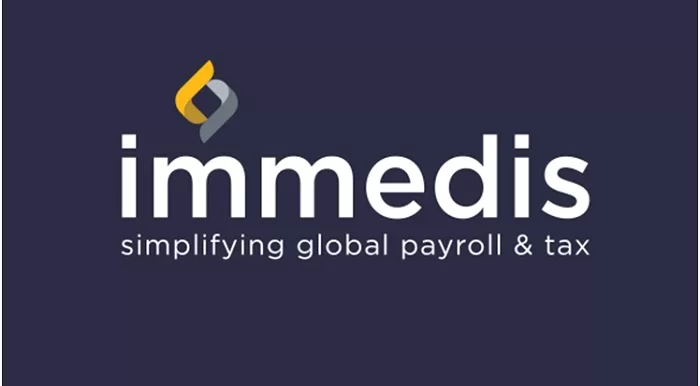HR & Consulting
How to Leverage Global Payroll as a Strategic Asset for your Organization

Payroll teams are charged with ensuring timely and accurate payroll delivery with every pay cycle. This can be a monumental and incredibly time-consuming undertaking for any global company, especially with payroll complexity growing as companies in many industries are increasingly operating globally and with a geographically distributed workforce.
Fortunately, payroll technology is evolving to simplify and streamline global payroll processes by automating many manual tasks. Another interesting development is that best practices organizations are finding ways to gain insights from payroll data that can be leveraged as a strategic asset to inform business decisions beyond payroll.
Case in point, a global financial services provider with 4,000 plus employees across nearly 50 countries significantly improved the timeliness and accuracy of payroll delivery by centralizing and streamlining global payroll operations. They achieved this by choosing the Immedis Platform which allowed them to replace their existing multiple and disparate payroll systems with a single consolidated global payroll solution. The added benefit of this simplified approach is that payroll, HR and finance leaders now have a single source of truth for activating data insights to inform strategic decision making. With Immedis’ data analytics and reporting functionality, the organization can analyze cost elements like pensions to assess their impact on the bottom line. These insights are invaluable not only for payroll and HR leaders but also for the CFO and finance teams, the CEO, the COO and investors.
The modern payroll function can and should be as much about supporting strategic decision making as it is about paying employees. Best practices payroll leaders and their organizations who take this approach will have a strategic advantage over competitors. Which begs the question – how do payroll leaders and their organizations get there?
The key is to bring together the right data with the right technology.
Strategic data insights depend on consolidated payroll management
Organizations need a global view of payroll data to ensure timely and accurate payroll delivery and to gain the actionable insights that can inform strategic business decisions beyond payroll. But this can be a labor-intensive task due to the range of different data formats, integration requirements and reporting needs across regions. Getting to a global, consolidated view for reporting and analytics requires that these differences be normalized so key information meaningfully informs stakeholders.
Newer technologies like robotic process automation (RPA) play a key role by helping ensure data completeness and accuracy all while reducing manual tasks. But to gain a single source of truth, payroll processes must be consistent across the globe. Many organizations use multiple payroll providers, some as many as a dozen or more payroll solutions across geographies and regions. This complexity hampers consolidation of your payroll operations and creates major obstacles to normalizing data sourced from disparate payroll systems, in different currencies with potentially different in country rules. By centralizing payroll management and consolidating payroll operations with a single provider, organizations will gain both payroll efficiencies and strategic insights from payroll data.
The HCM integration imperative
Data integration is a key factor in the value modern payroll can deliver to an organization. As mentioned above, the consolidation of multiple payroll providers to a single solution can simplify this process. But organizations also need to ensure their payroll platform is tightly integrated with their HCM systems. Payroll integration with HCM reduces the time spent on data handling that can occur with manual data entry processes from multiple excel spreadsheets. These manual processes are prone to human error, not to mention the security and compliance risks associated with sharing spreadsheets via email, loaded with sensitive and confidential employee data.
HCM and payroll integration can yield valuable insights into Gross 2 Net, General Ledger variances and other payroll trends that business leaders can use to inform strategic decision making.
Ensuring payroll data accuracy and integrity with automated data validation
Most payroll solutions today have systems intelligence features such as front-end and back-end edits and data validations dynamically targeted by the platform or “straight through processing” so a payroll processing cycle doesn’t have to be stopped to fix errors. But payroll compliance and statutory regulations are constantly changing, so how can payroll professionals possibly keep up without slowing down payroll operations and compromising data integrity?
This is where Immedis goes a step further with Perpetual Validation. As the name suggests, it continuously checks and subsequently validates the quality and completeness of HR and payroll data sourced from HCM and finance systems as well as continually updated compliance regulations contained within the Immedis Platform. Perpetual Validation automatically prompts payroll staff about missing, inaccurate or improperly formatted data, and guides the admin to take the best actions to correct any errors that will cause payroll not to run. A staff member doesn’t need expertise in every country’s specific regulations when the system enables them with alerts and recommended actions. This achieves the dual purpose of improving the efficiency of the payroll process while also continually ensuring the accuracy of employee payroll data. This is critical to preserving the integrity of employee data within the system. Without accurate employee data, any business planning or strategic initiatives based on that data will be invalid. Perpetual validation is also an example of how the Immedis Platform has a positive impact on the employee experience by ensuring each person receives the right pay at the right time.
Improving the employee experience
In addition to providing valuable insights based on employee data that can inform strategic business planning and decision making for the organization, payroll leaders also have an opportunity to influence the employee experience. Delivering right pay at the right time is the most obvious example of payroll’s potential to have a positive impact on employee retention efforts as research has shown it takes only 1 to 2 payroll delays or errors to cause a staff member to start looking for a new job.
With the right technology in place, payroll can also support employee financial wellbeing by providing reminders and links within payslips for employees to contribute to their retirement accounts or to learn more about how to manage their own financial wellbeing. This may seem like a simple or small thing for organizations to offer to their employees, but according to a survey of more than 10,000 Americans by Salary Finance, financially stressed employees are, on average, losing up to a month of productive working days, with an estimated cost to employers of $500 billion per year. Anything that organizations can do to better support employee financial wellbeing can be a win-win for organizations and the people who work for them.
Pay equity is also becoming increasingly important for organizations. From a legal perspective, an increasing number of countries are requiring organizations to conduct pay equity assessments. Considering an organization’s brand, people want to work for an organization that is known for having fair and equitable compensation practices. As mentioned previously, many global organizations use multiple payroll platforms, which can be a challenge when seeking consistent data insights across the company. A consolidated global payroll system that is tightly integrated with human capital management (HCM) systems can provide aggregate insights and analysis across the entire organization’s payroll infrastructure and the geographic regions where they operate. With the right payroll data inputs, analytics, and reporting capabilities, any organization can quickly assess and identify pay equity gaps. Based on these insights, organizations can develop an action plan to begin addressing any pay inequities that have been uncovered.
Transforming and elevating payroll
This is yet another example of how combining the right payroll data with the right payroll technology can provide a strategic advantage to an organization. Smarter technology and optimized processes allow the global payroll function to come into its own as an important strategic partner for the organization. Rich, robust, reliable and real-time employee data—broadly integrated with other valuable enterprise and external data—transform the global payroll team. Payroll benefits from not only ensuring right pay at the right time for employees, but also elevates its function to deliver a superior employee experience. Payroll becomes a primary source for in-depth analysis of labor costs and trends, enabling the C-Suite and senior leaders across the organization to make informed and strategic business decisions.

Tara O’Sullivan
Chief Marketing Officer – Immedis


















































